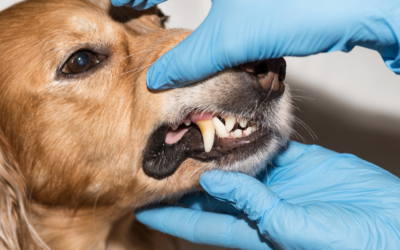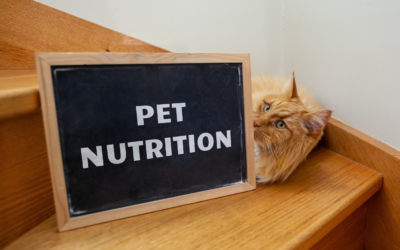Embrace the Season with Awareness and Care
Spring symbolizes rebirth and warmth, a time when our pets enjoy the burgeoning outdoors as much as we do. However, with the season’s beauty come challenges that could compromise our pets’ health. This detailed guide delves into essential springtime pet health tips, focusing on preventative care and safety measures to ensure your pets thrive during this vibrant season.

game of soccer, reminding us of the active spirit of springtime pet health.”
Understanding Seasonal Allergies in Pets
Just as humans are susceptible to seasonal allergies, our pets can also experience discomfort due to pollen, mold, and dust. Recognizing the signs early and understanding how to mitigate these allergies are crucial steps in ensuring your pets’ well-being.
Preventive Measures:
- Enhanced Cleanliness: Keep your pet’s bedding pristine and opt for hypoallergenic materials. Regular grooming sessions can significantly reduce the buildup of allergens in your pet’s fur.
- Medical Consultation: For pets showing severe allergy symptoms, consulting a veterinarian for a tailored treatment plan is vital. This might include antihistamines or specialized shampoos.
For Seasonal Pet Allergies:
- Learn more about managing seasonal allergies in pets at the Asthma and Allergy Foundation of America.
Flea and Tick Prevention: Beyond the Basics
The warmer months increase the activity of fleas and ticks, which can transmit diseases and cause health complications. Understanding the lifecycle of these pests and implementing a comprehensive control strategy is key to protecting your pets.
Preventive Measures:
- Year-round Protection: While spring marks an uptick in flea and tick activity, year-round preventative treatments are recommended for continuous protection.
- Environmental Control: Treat your home and yard with pet-safe products to eliminate fleas and ticks at all life stages.
For Flea and Tick Prevention: The American Veterinary Medical Association offers comprehensive guidance on flea and tick prevention for pets.
The Menace of Heartworm Disease
Heartworm disease poses a significant threat in the spring and summer months, transmitted through mosquito bites. The disease’s progression can be silent but deadly, making prevention critical.
Preventive Measures:
- Continuous Prevention: Heartworm prevention medication should be administered year-round or as recommended in regions with seasonal mosquito activity.
- Regular Testing: Annual heartworm testing ensures early detection and treatment, significantly improving outcomes.
For Heartworm Disease Information: Understand heartworm disease and its prevention at the American Heartworm Society.
Springtime Safety and Wellness
Navigating Outdoor Adventures Safely
Spring’s allure often leads to increased outdoor exploration, which, while beneficial for a pet’s physical and mental health, introduces risks from environmental hazards.
Preventive Measures:
- Leash Training and Supervision: Always supervise your pets outdoors, even in familiar environments. Training your pet to respond to commands can prevent them from straying into dangerous areas.
- First-Aid Preparedness: Equip yourself with basic pet first-aid knowledge and keep a kit handy for outdoor adventures.
For General Springtime Pet Health Tips: The ASPCA’s seasonal safety tips provide a great checklist for pet owners during spring.
For Outdoor Pet Safety: Explore best practices for keeping pets safe outdoors with tips from The Humane Society of the United States.
The Importance of Hydration and Overheating Prevention
Dehydration and heatstroke are serious risks during the warmer months, especially for pets with thick fur, older pets, and those with health conditions.
Preventive Measures:
- Constant Water Supply: Ensure your pets have access to clean water at all times. Consider carrying a portable water dish during long walks.
- Mind the Heat: Schedule walks during cooler parts of the day, and never leave pets in a parked car, even with the windows down.
For Hydration and Overheating Prevention: Discover the importance of hydration for pets and how to prevent overheating on PetMD.
Protecting Your Pet from Toxic Plants in Spring
With the bloom of spring comes a variety of plants and flowers that, while beautiful, can be hazardous to our pets. Dogs and cats may be curious by nature, but ingesting the wrong plant can lead to serious health issues.
Common Toxic Plants:
- Lilies: Highly toxic to cats, even in small amounts.
- Daffodils: The bulbs of these flowers are toxic to both dogs and cats.
- Tulips: The bulb, plant, and flower can be harmful if consumed by pets.
Preventive Measures:
- Garden Safely: Choose pet-friendly plants for your home and garden.
- Supervise Your Pets: Keep a watchful eye on your pets when they’re outside, especially in areas with a variety of plants.
- Educate Your Family: Ensure that all family members know which plants are harmful to pets.
To learn more about which plants can be dangerous to your pets and how to prevent accidental ingestion, refer to the Pet Poison Helpline’s list of toxic plants. This comprehensive guide is a must-have resource for any pet owner looking to enjoy the spring safely with their furry friends.
Regular Vet Check-ups: A Pillar of Preventative Care
Spring is an opportune time for a comprehensive wellness check. These visits can catch issues early and provide peace of mind for the season ahead.
Check-up Focus Areas:
- Vaccinations and Parasite Control: Ensure your pet is up-to-date on vaccinations and discuss parasite control options with your vet.
- Health Baseline Assessment: A thorough physical exam, including weight and dental health assessments, sets a baseline for your pet’s health and uncovers any potential concerns.
Frequently Asked Questions
How do I know if my pet has allergies?
Symptoms can include excessive scratching, sneezing, watery eyes, and skin irritations. Consult your vet for a definitive diagnosis and treatment plan.
Can indoor pets still get fleas or ticks?
Yes, indoor pets can still be affected. Fleas and ticks can hitch a ride on clothing or other pets and infest your home.
What are the signs of dehydration in pets?
Signs include lethargy, dry gums, excessive panting, and decreased appetite. Provide ample water and seek veterinary care if symptoms persist.
Conclusion
Spring offers a splendid opportunity for pets and their owners to enjoy the great outdoors, but it also calls for vigilant pet care. By addressing the unique health challenges of the season, from allergies to parasites, and ensuring your pets are prepared for warmer weather, you can enjoy a happy and healthy spring together. Remember, proactive care and early detection are your best tools in maintaining your pet’s health during this vibrant season.




